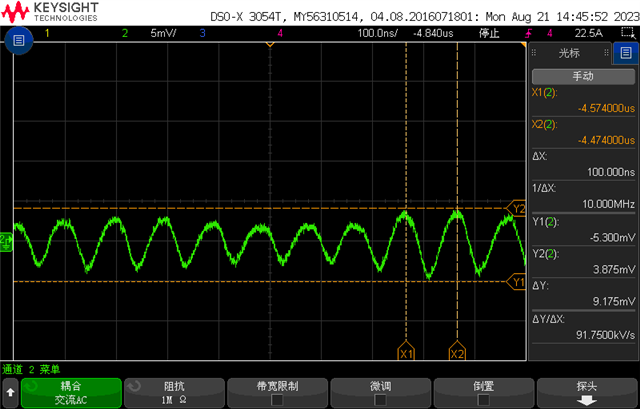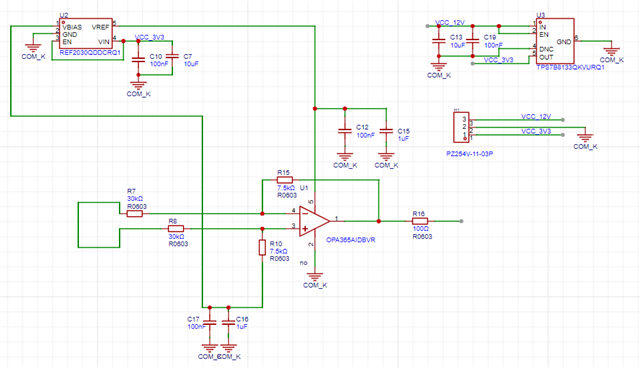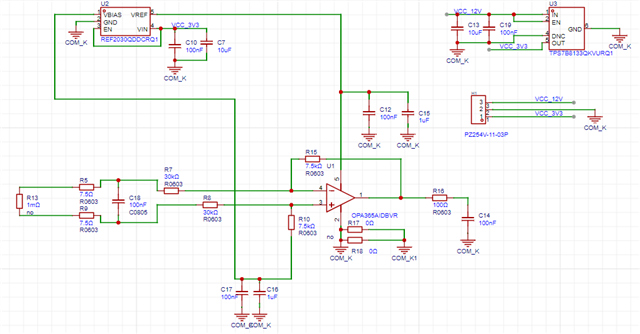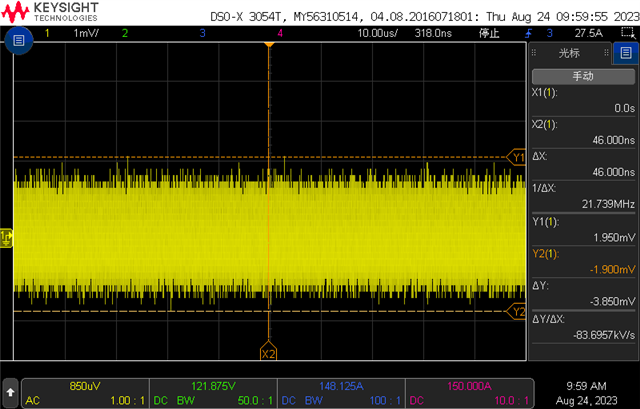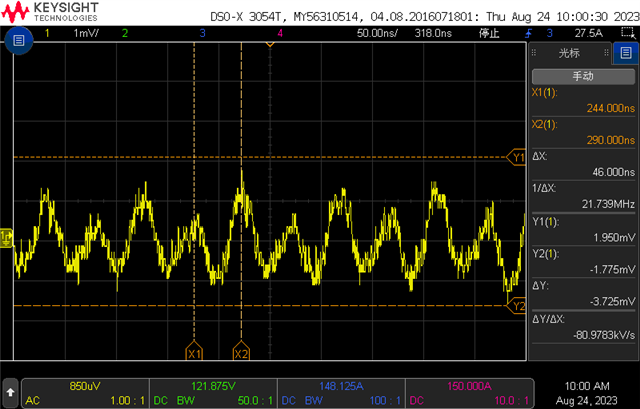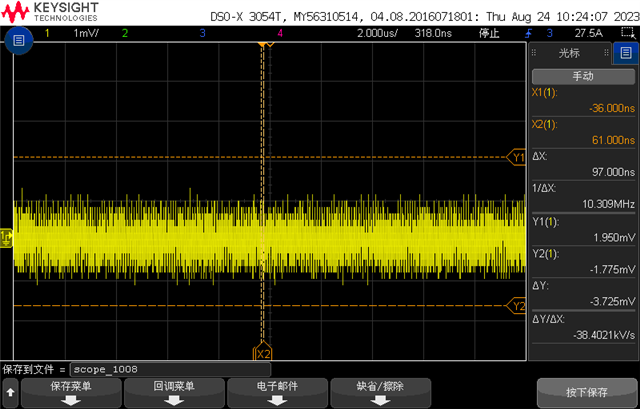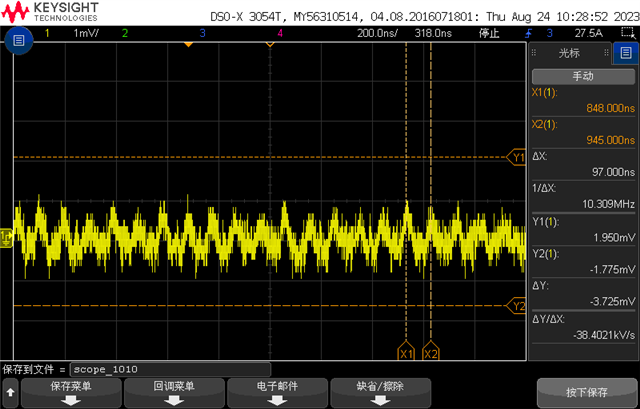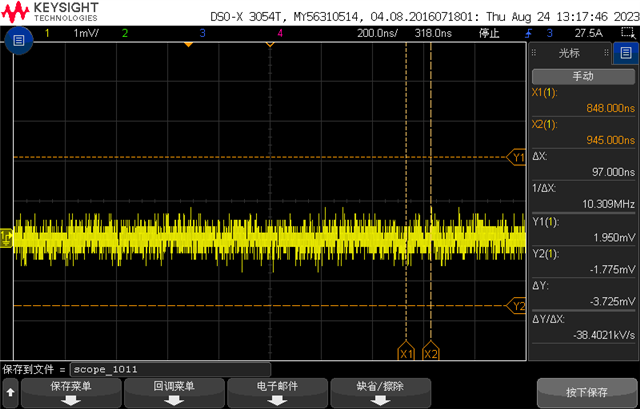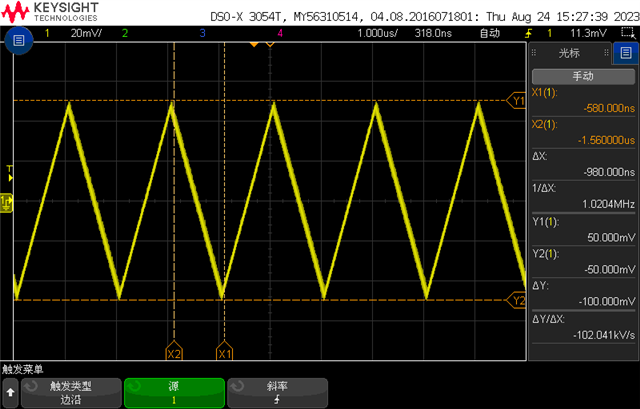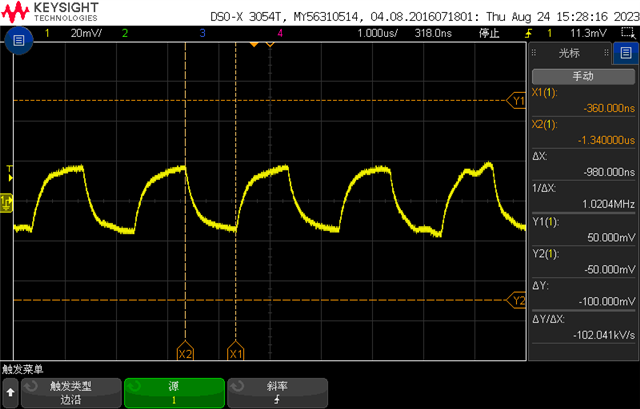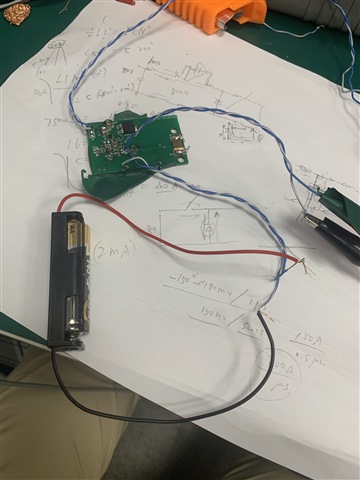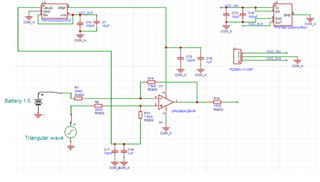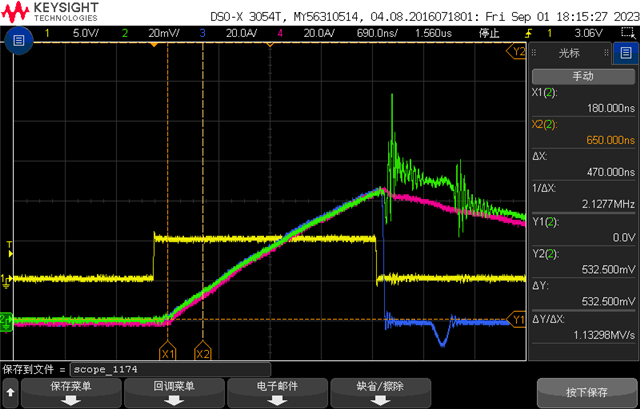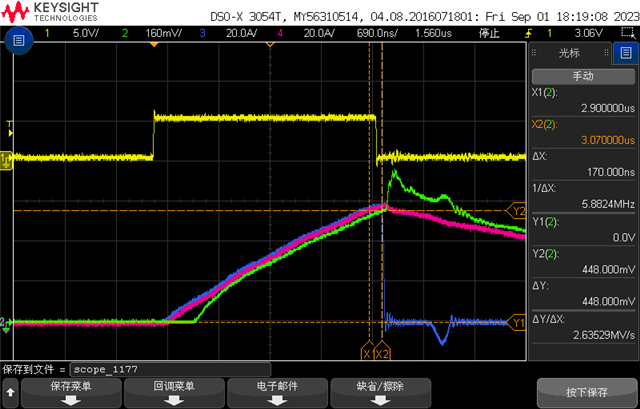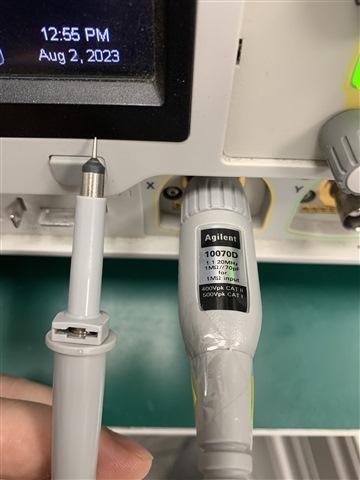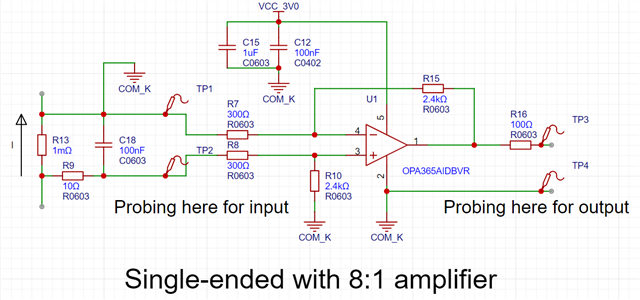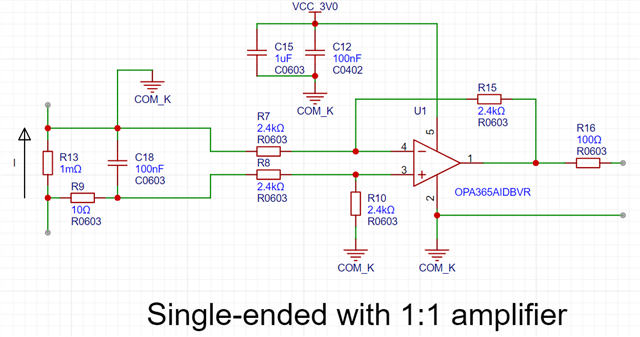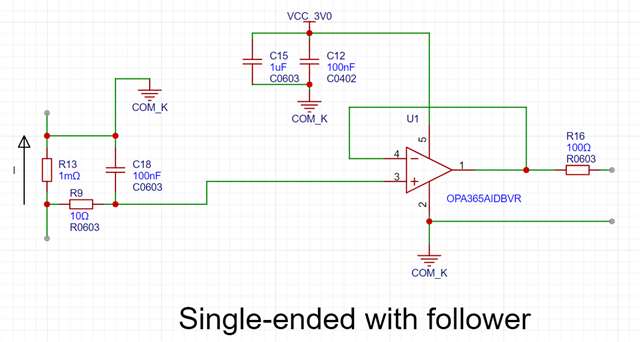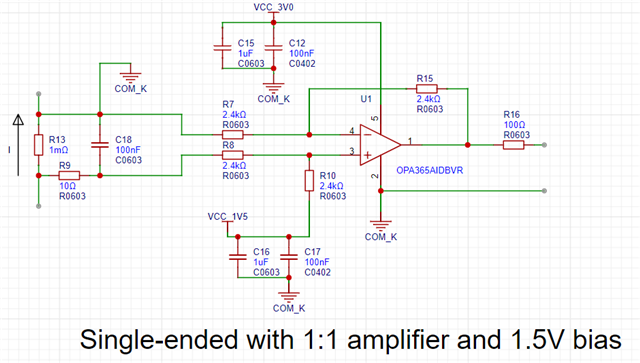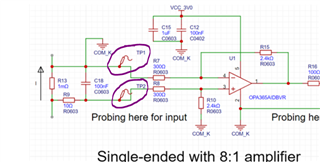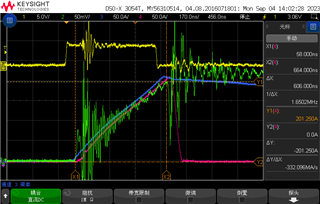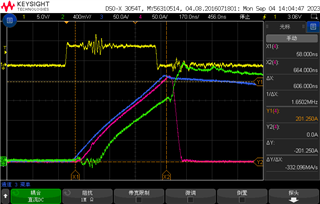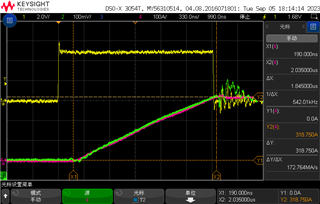Hi,
I laid the PCB of an OPA365-Q1 according to the suggestions I collected from TI’s related documents.
- Good power supply decoupling
- Keep inverting pin as small as possible
- Remove the ground under the inverting pin.
See below figure for my layout at the opamp. U1 is the opamp. R7 and R15 is a voltage divider at inverting pin. R8 and R10 is a voltage divider at non-inverting pin. C12, C15 are decoupling capacitors on its 3V power supply pin. C16 and C17 are capacitors for its 1.5V DC bias. Red traces are on top layer. Blue background is ground on bottom layer. This is a two-layer board of thickness 1.6mm.
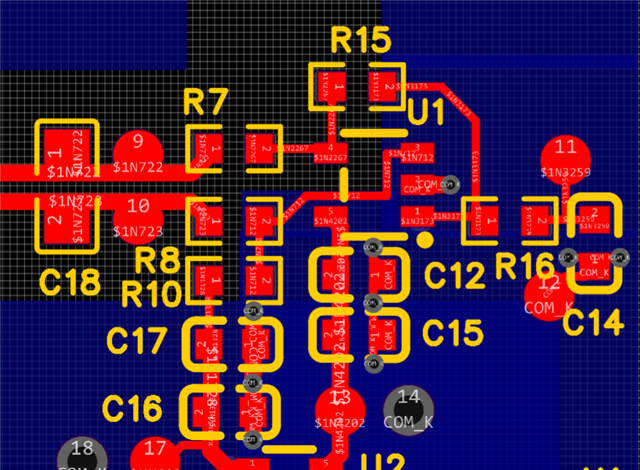
After experiments with this board, I have the oscillation (around 10MHz) at the output when the input is short-circuited (which means no input signal is added). What’s wrong with my PCB layout?
